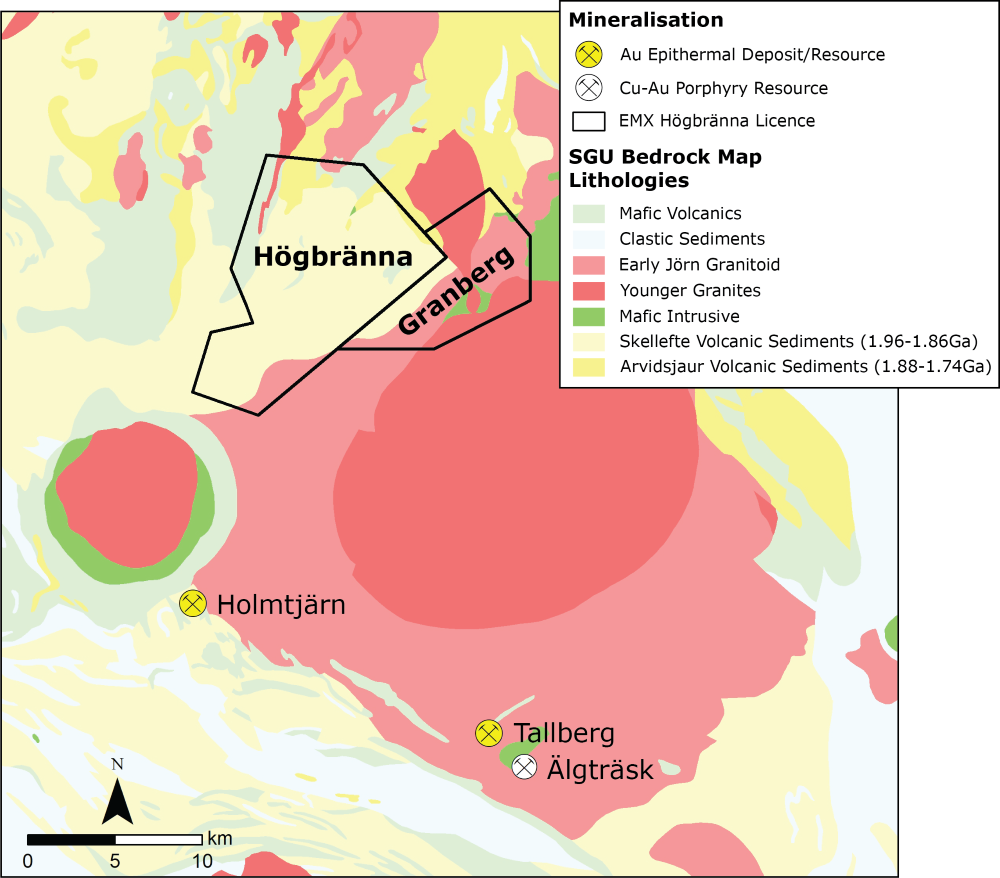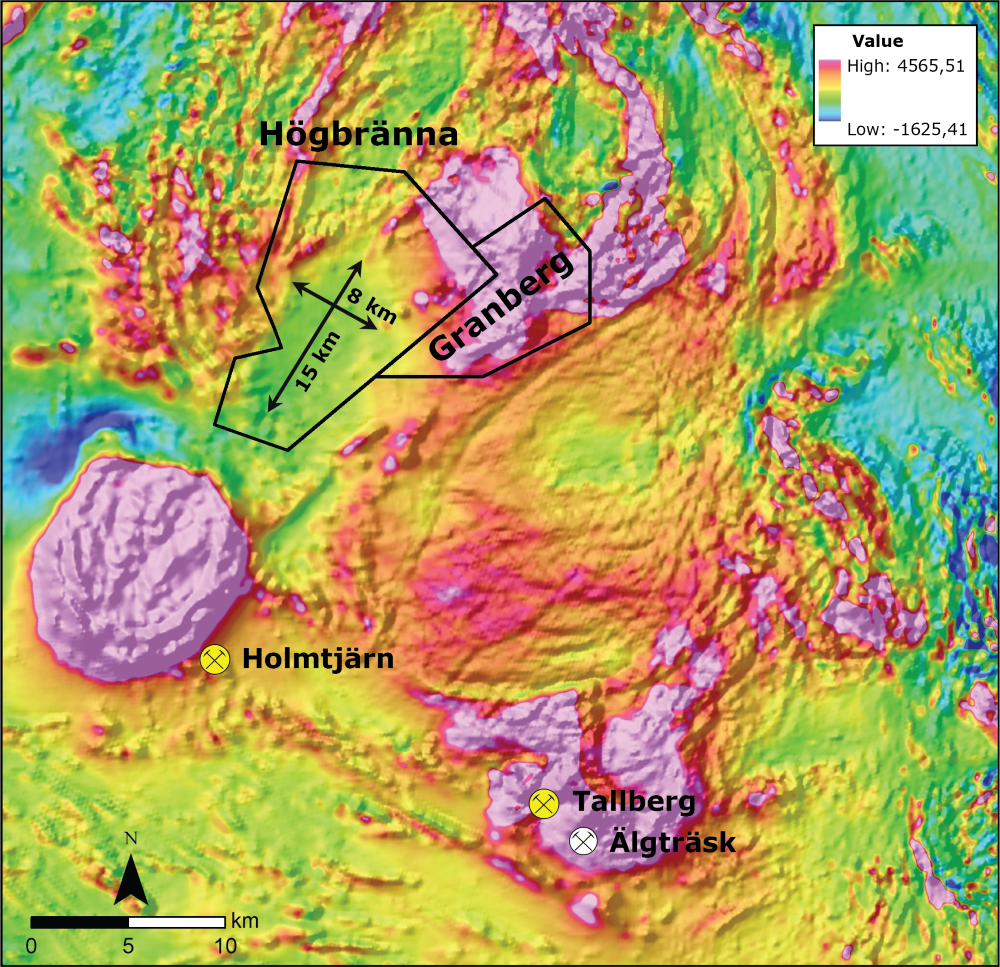Högbränna & Granberg
EMX’s Högbränna project has a large land position located in the prolific Skelleftea District. The project area is in Lower Proterozoic (~1.8 Ga) submarine volcanic, sedimentary, and intrusive rocks. Several massive sulfide deposits occur in the Skellefte volcanics, and several small porphyry-type deposits exist in the older granitoids, which are coeval with the volcanics1. The project area is analogous to Tallberg’s Au-Cu porphyry style of mineralization.*
The project’s unique and untested target concepts are in an area historically explored for VMS mineralization associated with Skellefte Volcanincs. Mineralization at Högbränna is consistent with an intermediate sulphidation epithermal/porphyry system, though the project was not historically evaluated in a porphyry context. Targets include QSP alteration coincident with anomalous magnetic low indicating a buried felsic intrusion. Alteration grades outwards to hematite-bearing volcanics.
In 2023, EMX expanded the project with the Granberg license. During the initial reconnaissance of the Granberg license expansion, EMX collected rock samples2 which resulted in an average copper grade of 843 ppm Cu (n=7, min=11.5 ppm Cu, max = 1935 ppm Cu). Follow up work identified sheeted and stockwork vein zones and mineralized porphyries in outcrop. EMX later completed a soil survey over a portion of the license, selected based on outcropping copper mineralization and a coincident magnetic high. Soil samples were analyzed using the milti-element fine fraction analysis (MEFFA) method3. Results of the soil sampling highlight zonation of Cu, Mo, and Pb/Zn. The MEFFA method evaluates till geochemistry rather than bedrock, so anomalies may be offset from the bedrock source depending on the magnitude of glacial transport that has occurred.
Maps
*The nearby mines and deposits provide context for EMX’s project, which occurs in a similar geologic setting. However, this is not necessarily indicative that the Högbränna property hosts mineralization with similar tonnages or grades.
1 Pär Weihed & Hans Schöberg (1991) Age of porphyry-type deposits in the Skellefte District, northern Sweden, Geologiska Föreningen i Stockholm Förhandlingar, 113:4, 289-294, DOI: 10.1080/11035899109453203.
2 EMX rock chip samples are collected in accordance with industry standard best practices. Samples are submitted to ALS in Malå, Sweden where they are prepped before being shipped to ALS in Galway, Ireland for analysis. Accredited control samples (blanks and accredited standards) are inserted into the sample suite regularly. Samples are dried, weighed, crushed (70% < 2mm), and riffle split into two fractions. One is retained (coarse reject) and the other is pulverized to 85% < 75µm. Pulps are analyzed by ultra-trace ICP-MS (ME-MS61) and ICP-AES Au-Pt-Pd (PGM-ICP23). Over detection limit samples are reanalyzed using ore grade ICP-AES by aqua regia (ME-OG62).
3 EMX soil samples were collected in accordance with industry standard best practices. Samples are collected in the field and sampled using pXRF Olympus Vanta-M with Rh-anode. Once the sample is collected in the field there is no sample preparation prior to analysis. Accredited control samples (blanks and accredited standards) are inserted into the sample intervals regularly. The pXRF results are to be considered estimates and have not been independently checked with a certified laboratory but are considered to be relevant and reliable.

 Click to Enlarge
Click to Enlarge
 Click to Enlarge
Click to Enlarge